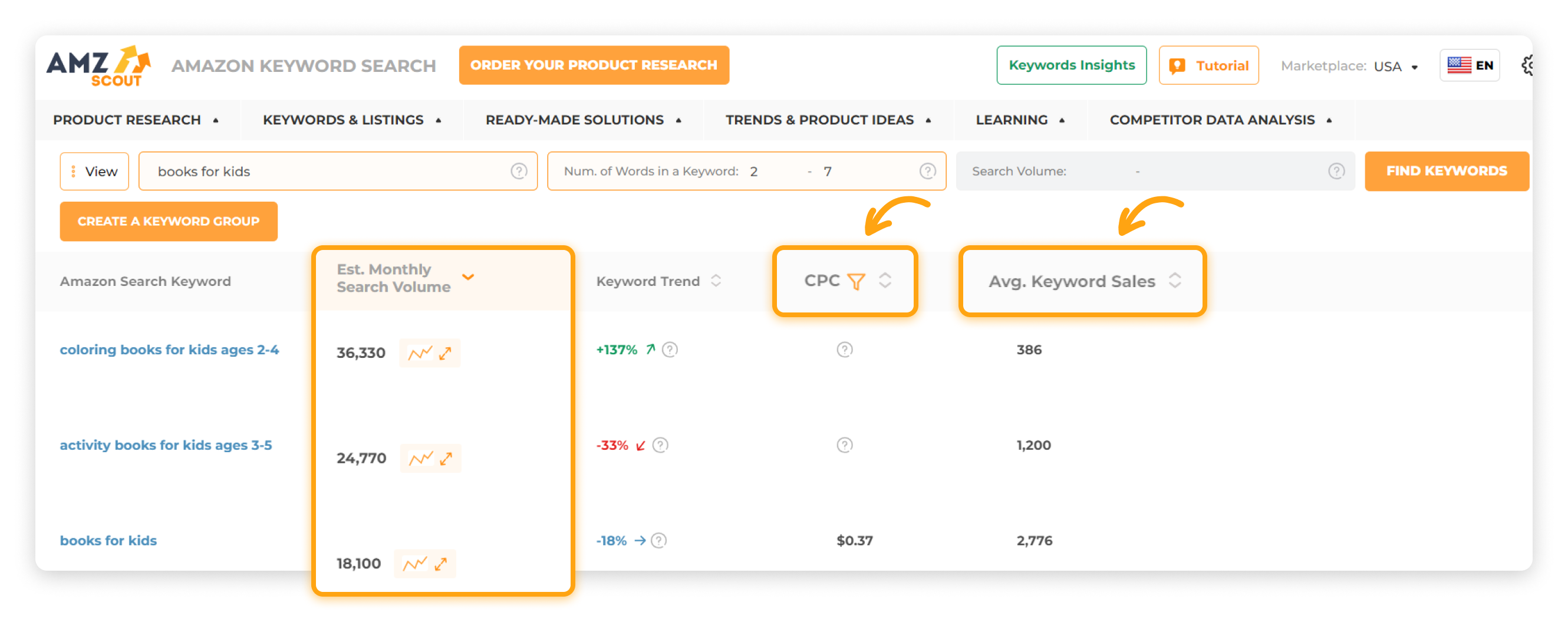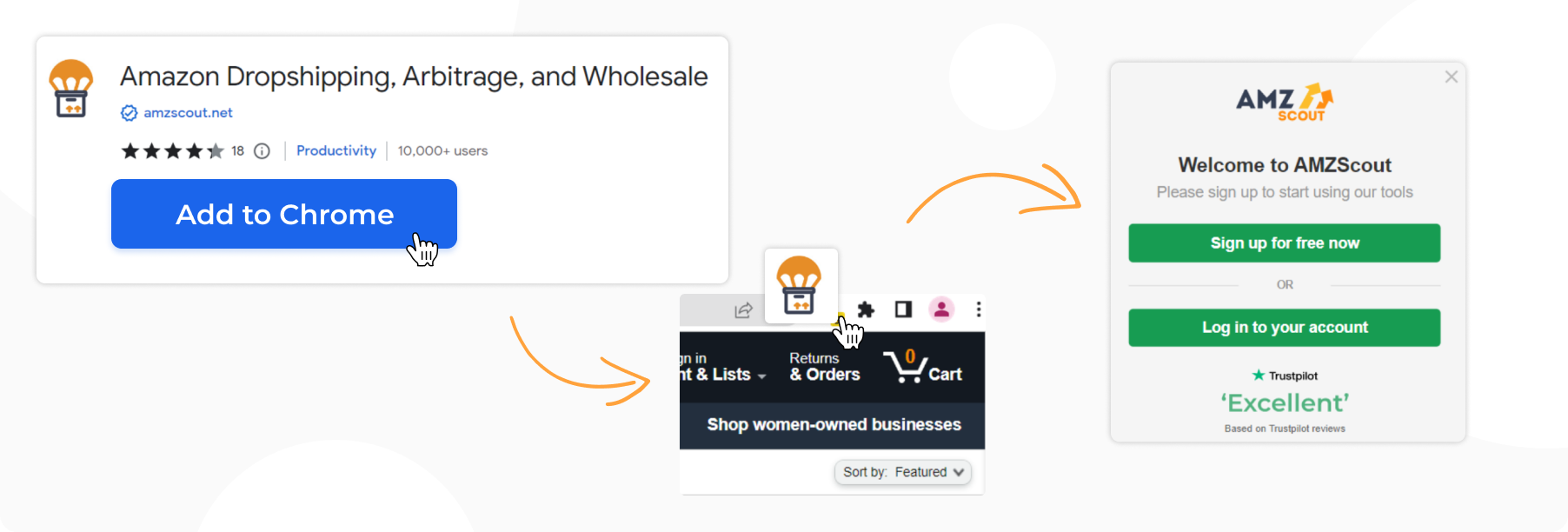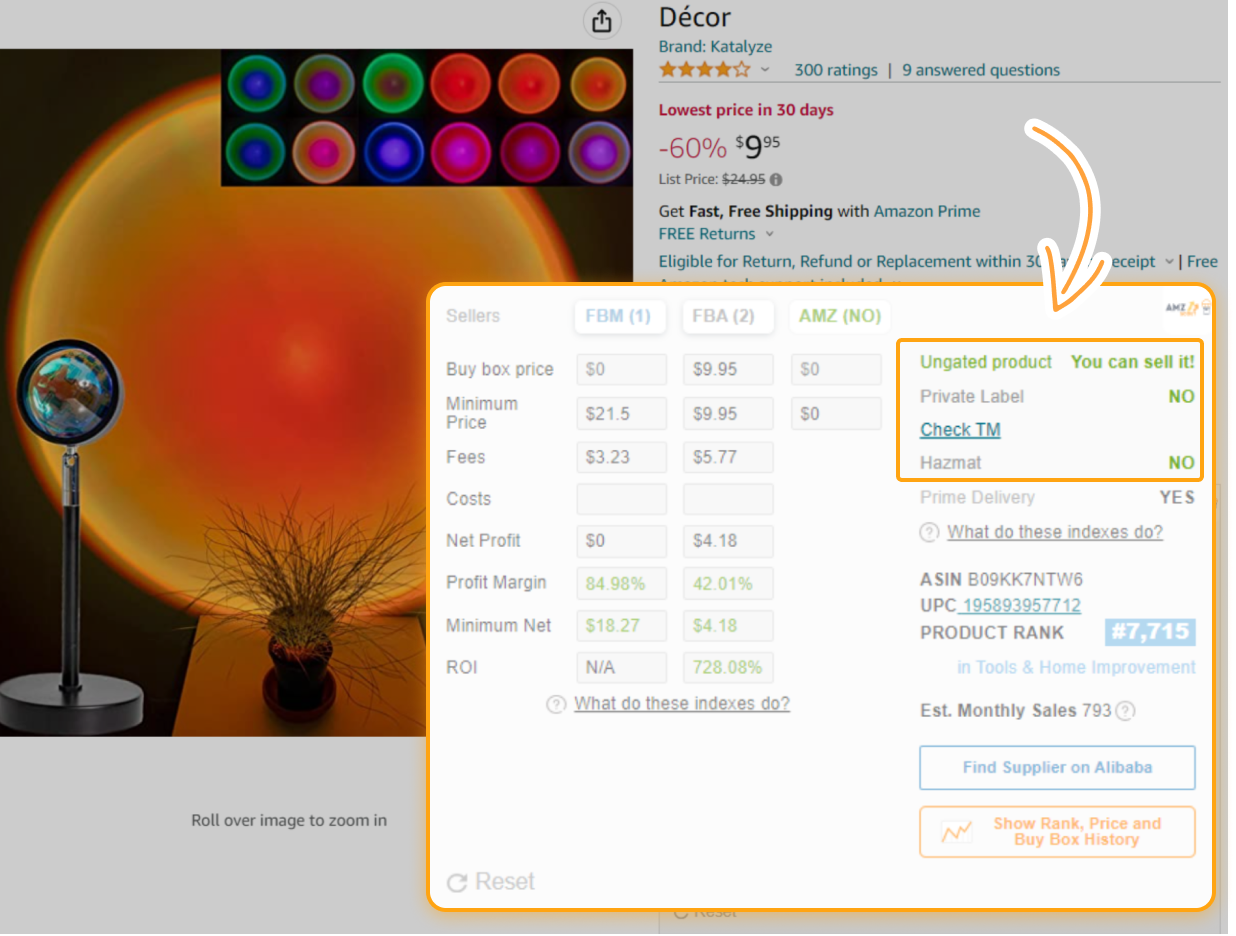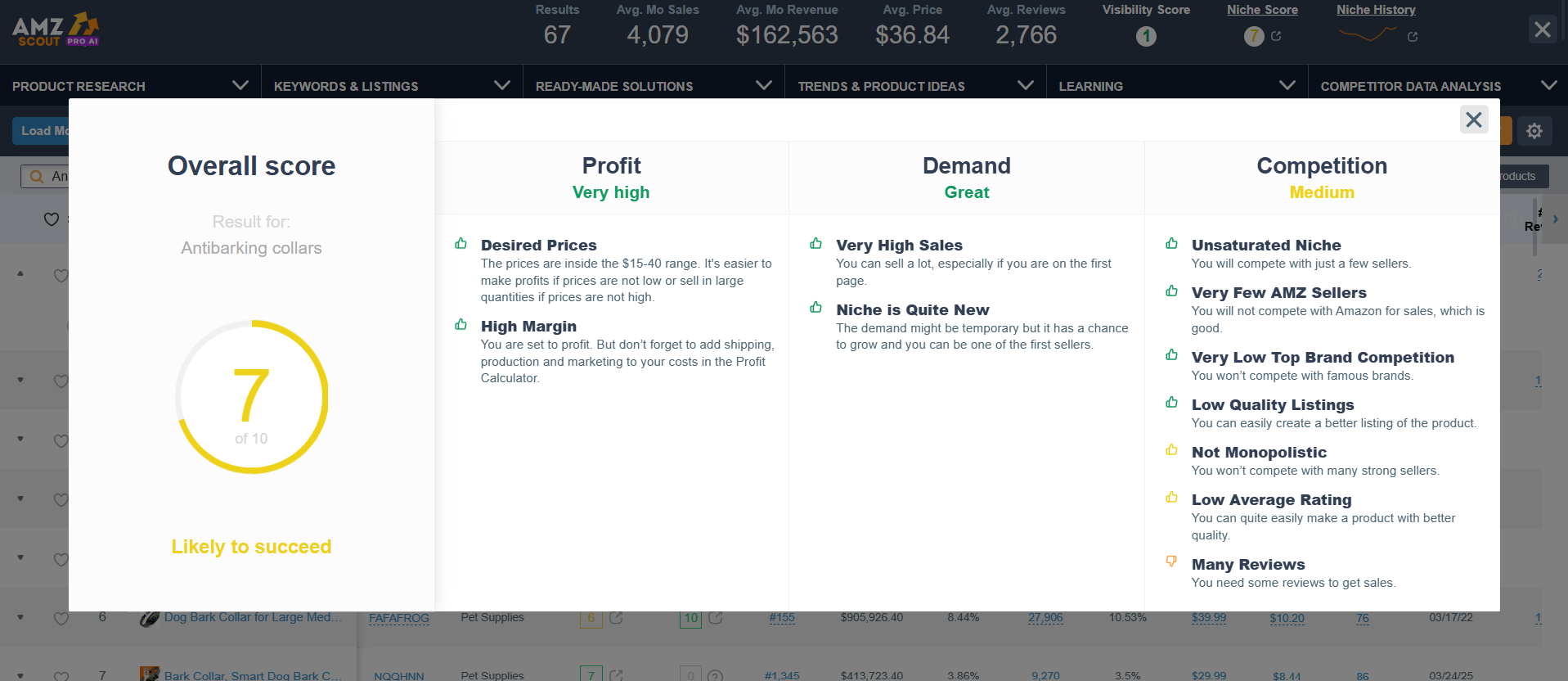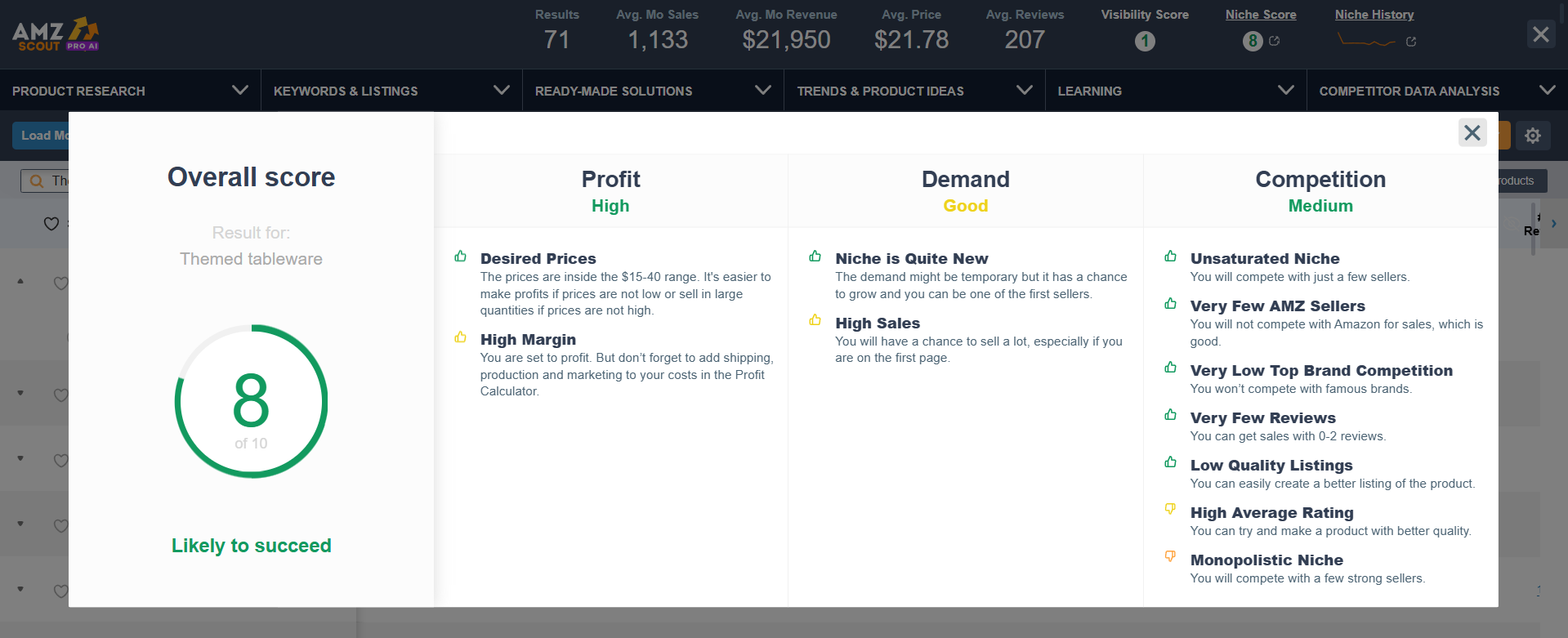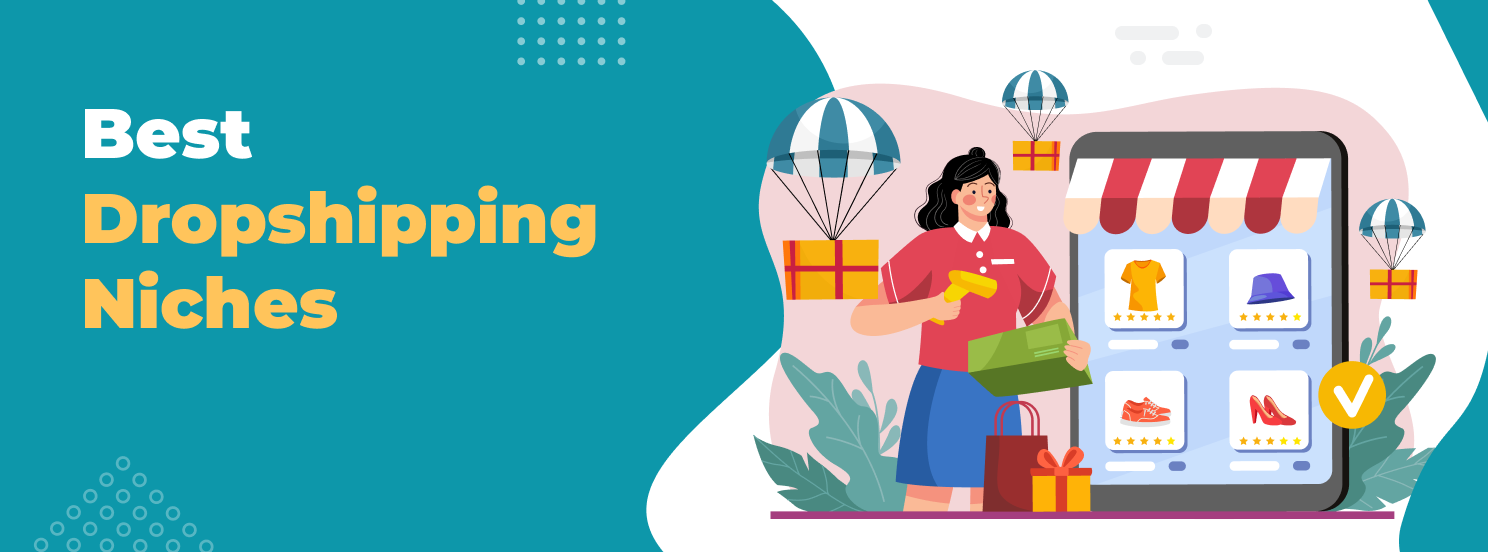
The Best Dropshipping Niches in 2025
Starting a dropshipping business is easy thanks to its low entry barrier, but success largely depends on the products you choose to sell. With thousands of options available, finding the right ones can feel overwhelming, especially for beginners. The key is to focus on niches that boast good profit margins and strike a balance between demand and competition.
In this article, we’ll guide you through the process of finding profitable dropshipping niches and share 10 examples of the best ones.
Table of contents
How to Find Profitable Niches for Dropshipping
Finding a profitable niche for dropshipping starts with thorough market analysis. While the process may vary depending on your goals and experience, these universal steps will help guide you in the right direction:
Step 1: Gather Potential Niche Ideas
Start by deciding what kind of products you want to sell. Here are a few reliable sources to help you generate niche ideas:
Keyword tools: Use Google Trends to spot rising interest across the web. For platform-specific insights (like Amazon), you can utilize tools like the AMZScout Keyword Search to see what types of products shoppers are actively searching for.
Social media: Platforms like TikTok and Instagram are full of viral products—check hashtags, likes, and comments to spot what’s trending.
Bestseller lists: Browse top-selling items on sites like Amazon and Walmart to see what’s already in high demand.
Forums: Explore Reddit or Quora to see what people are recommending, complaining about, or looking for solutions to.
Make a list of the ideas that resonate with you. In the next step, we’ll review how you can evaluate and narrow down your choices.
Step 2: Evaluate the Niche Suitability for Dropshipping
Now that you’ve made a list of potential niches, it’s time to filter out those that may lead to more problems than profit. A good dropshipping niche isn’t just one that’s popular—it must also include items that are practical to sell without the need for inventory or hands-on handling. Use the following criteria to assess whether a product idea is a good fit:
Lightweight and compact: Smaller items are cheaper to ship and less prone to damage, which helps you keep costs low.
Durable and low-risk: Avoid fragile products (like glassware) that break easily or need special packaging—they lead to returns, refunds, and unhappy customers.
Low return rate: Products like clothing with sizing issues or items that can be disappointing in-person may be popular but can also eat into your profits due to high return volume.
No legal or safety complications: Stay away from niches that require certifications (like supplements) or face import restrictions. These products can trigger account suspensions or customs issues.
By filtering your niche ideas using these criteria, you'll be left with dropshipping-friendly options that are not only in demand but also easier to manage while you scale your profits.
Step 3: Evaluate the Competition
Dropshipping is a highly competitive field—not only will you be competing with other dropshippers, but also with sellers using wholesale, online arbitrage, or other models. That’s why it's crucial to assess how saturated a niche is and whether the competition is manageable.
To gauge the level of competition, focus on the following key indicators:
Total listings: If you’re selling on a marketplace like Amazon, take note of the total number of search results for a niche-specific term. If the number is below 1,000, that usually signals lower saturation and a greater chance to stand out.
The number of active stores in the niche: See how many online stores (Shopify, etc.) are actively selling within the niche. Just Google the product + "buy" and check how many unique stores show up on the first few pages. A high number of similar stores usually means tough competition.
Supplier popularity: When evaluating suppliers, ask how many other dropshippers for whom they supply products. If your niche products are being sold by hundreds of stores, it will be harder to differentiate your business (unless you bundle or customize your offer).
By analyzing the competition early, you’ll avoid entering oversaturated niches and increase your chances of success with a product that still has room to grow.
Step 4: Check Customer Reviews
Customer reviews are a goldmine for determining whether a niche is truly profitable and where the best opportunities lie. Repeated complaints across multiple listings can signal unmet needs or product flaws, giving you a chance to offer better alternatives.
On the flip side, positive reviews highlight the features customers love, which you can emphasize in your marketing to increase conversions. Analyzing both strengths and weaknesses helps you position your product more effectively and make smarter sourcing decisions.
While a niche might seem profitable overall, you still need to evaluate each product individually to decide whether it’s worth importing to your store or better to avoid. This helps you focus your advertising budget on the right items so you can make smart investments and avoid wasting time and effort on products that won’t deliver results.
How to Identify the Best Products for Dropshipping
Even within a profitable niche, not every product will sell well. That’s why it’s important to assess key metrics such as demand, competition, profit margin, and sales potential.
Since most platforms don’t publicly share detailed product data, Amazon is often used as the basis for research due to its status as an ecommerce leader and the availability of specialized tools (like the AMZScout Dropshipping, Arbitrage, and Wholesale Extension).
Here’s step-by-step guide to use this tool to validate products:
1. Install the extension. Sign up with your email address to activate the free trial.
2. Search for a product. Enter a product name into Amazon’s search bar and open the product page to begin your analysis.
3. Check for any selling restrictions. Marketplaces like Amazon often place specific restrictions on certain types of products. To avoid complications later, scroll down to the lower section of the extension window and review the following potential limitations—these will be clearly marked in red:
Gated category: Some product categories (especially brand-name goods) require Amazon’s approval to sell.
Private label: These are products that cannot be resold by non-brand owners.
HAZMAT status: Products like electronics with lithium batteries may require special certifications.
Brand restrictions: Look for the ™ symbol to verify if brand permission is needed.
4. Assess the competition. At the top of the extension, review:
Number of sellers: More than 10 other sellers can indicate strong competition.
Amazon as a seller: If Amazon also sells the product, it’s usually best to avoid it.
5. Analyze Sales History. Use the Rank, Price, and Buy Box History feature to explore pricing and sales trends over time. This helps you spot seasonal shifts or identify the right pricing strategy.
Note: The extension also provides the product’s estimated monthly sales. This information helps you gauge the demand to make informed decisions about which products to sell.
6. Estimate your potential profit. Use the built-in profit calculator in the FBM (Fulfilled by Merchant) tab:
Enter the cost of your product, shipping, platform fees, and any other expenses.
Aim for a profit margin of at least 20% to make the product worthwhile.
By following these steps, you’ll be able to make informed decisions about which dropshipping products have the best chance of success. While Amazon data is used as the foundation for these insights, the same approach applies when evaluating products for other ecommerce platforms as well.
The 10 Best Dropshipping Niches
While trends come and go, some product categories consistently perform well in the world of dropshipping. Below are 10 of these niches to inspire ideas for your online business:
1. Bags & Accessories
The handbag market isn’t slowing down. Luxury handbags alone are forecast to add nearly $25B in sales from 2024–2028. This makes bags and accessories a consistently strong dropshipping category, especially in fashion. These products are lightweight and easy to ship, which helps reduce delivery costs, and they offer higher margins thanks to strong branding potential. Plus, they’re ideal for bundling, which can increase average order value and boost your overall sales.
Examples:
Crossbody bags
Wallets
Winter gloves
Belts
Key holders
According to AMZScout PRO AI, key holders generate nearly $31,000 in monthly revenue on Amazon, with over 2,800 sales/month.
2. Beauty Products
“Clean beauty” is one of the fastest-growing niches, set to reach $21B by 2030. Sales of at-home skincare items are booming, and Korean cosmetics plus eco-friendly formulations attract trend-savvy customers who value quality and innovation. These items are also perfect for repeat purchases, helping you build a loyal customer base over time.
Examples:
Reusable makeup pads
Snail mucin creams
Eco face masks
Natural lip tints
Jade rollers
Jade rollers are currently in high demand on Amazon—AMZScout PRO AI estimates over 1,500 monthly sales and more than $17,000 in revenue.
3. Smart Pet Products
The pet-tech market, already worth $12.5B in 2025, is expected to nearly double by 2030. Pet owners are always searching for the best items for their furry companions: from food to clothing and connected gadgets. Dropshippers can benefit by offering niche products tailored to specific breeds or needs, helping to reduce competition. Pet supplies also carry high emotional value, which makes customers more willing to pay a premium for quality and convenience.
Examples:
GPS trackers
Automatic feeders
Pet cameras
Interactive toys
Anti-barking collars
Anti-barking collars generate over $160,000 in monthly revenue on Amazon and have a niche score of 7 according to AMZScout PRO AI, indicating high profitability, strong demand, and manageable competition.
4. Holiday Decorations
This niche is seasonal but extremely profitable, and sees sharp spikes in demand. Unique and themed decorations often go viral, making them great dropshipping products for short-term wins. You don’t need to worry about managing any inventory as your supplier handles that, but it’s also important to time your ads correctly to drive sales when demand is highest. Proof in the peaks: Nov–Dec 2024 U.S. online spend hit a record $241.4B (+8.7% YoY), with 54.5% of orders on mobile; Halloween décor alone climbed ~42% in spend from 2019 to 2024 - prime “burst” windows for fast campaigns.
Examples:
Halloween lights
Christmas inflatables
Easter wreaths
Valentine’s garlands
Themed tableware
Themed tableware is in demand on Amazon—AMZScout PRO AI reports over 1,000 monthly sales and around $20,000 in profit. The niche offers high margins, medium competition, and is relatively new, making it a promising opportunity.
5. Baby Essentials
The global baby products market, worth $321B in 2023, is projected to reach almost $475B by 2030. Parents are typically willing to invest in practical, time-saving items, making this category ideal for both everyday use and gifting. One of the fastest-growing trends is on-demand personalization, which only a few dropshipping suppliers offer, giving you a chance to stand out with lower competition. Focus on high-quality products to encourage positive reviews and repeat customers.
Examples:
Silicone teethers
Portable bottle warmers
Baby-proofing kits
Diaper bags
Soft bibs
Soft bibs are among the best-selling kids’ products on Amazon—according to AMZScout, they see nearly 2,500 sales per month with a revenue of $34,500.
6. Space-Saving Home Products
Minimalistic apartment style and decor are currently trending, making space-saving home products essential for modern living. These products not only cater to growing demand but can often be sourced at competitive prices, allowing you to benefit from a healthy markup while offering high value to customers. Marketwise, home storage & organization is expanding steadily (4–5% CAGR through 2033), reflecting a sustained consumer shift toward modular, “small-space” solutions rather than one-off décor buys.
Examples:
Wall-mounted shelves
Foldable chairs
Modular storage bins
Compact laundry racks
Under-bed organizers
According to AMZScout PRO AI data, under-bed organizers generate nearly $130,000 in monthly revenue with around 4,500 sales.
7. Kitchen Utensils
Kitchenware is a surprisingly robust category, projected to hit $86.8B by 2029. Modern consumers love smart gadgets that make cooking faster and more efficient. Since these products are used daily, they ensure consistent sales throughout the year. And compared to other niches, utensils and gadgets tend to have one of the lowest return rates, making them a safe and steady dropshipping choice.
Examples:
Multi-use slicers
Collapsible colanders
Non-stick baking mats
Reusable food wraps
Magnetic spice jars
Magnetic spice jars generate over $35,000 in monthly revenue on Amazon, with around 1,500 sales, according to AMZScout PRO AI estimates.
8. Travel Essentials
With the luggage market set to grow from $41B in 2025 to $57B by 2030, travel is clearly back in full force. Compact and multifunctional products that simplify packing and enhance comfort are in high demand. With many suppliers offering these items, you can easily find cost-effective subscription options to keep your store stocked with popular, practical products.
Examples:
Travel slippers
Portable neck pillows
Travel toiletry kits
Collapsible water bottles
Packing cubes
Among travel essentials, packing cubes sell exceptionally well on Amazon—AMZScout PRO AI data shows over $140,000 in monthly revenue with more than 5,000 sales/month.
9. Fitness Apparel & Accessories
By combining fashion and function, fitness gear continues to dominate the list of most high ticket dropshipping niches. With the growing trend toward health and wellness, people are more willing to invest in products that enhance their well-being. This niche also offers the opportunity to bundle products, which increases your average order value while meeting a variety of customer needs. Athleisure is a powerhouse: roughly $358B in 2023 and projected ~$663B by 2030. Even conservative broad sports-apparel trackers peg 2025 at ~$220B rising to ~$298B by 2032, so there’s room across price tiers.
Examples:
Resistance bands
Seamless leggings
Yoga mats
Sweatproof headbands
Foam rollers
Foam rollers generate nearly $100,000 in monthly revenue on Amazon, with around 4,000 sales per month, according to AMZScout PRO AI.
10. Electronics & Gadgets
Mobile accessories are forecast to hit nearly $149B by 2030, proving just how strong consumer appetite for gadgets remains. Tech items are constantly evolving, and buyers are eager for innovations that improve their daily routines. Just keep in mind that certain platforms have strict rules, especially for battery-powered devices. For example, IATA regulations still cap lithium battery charge at 30% during shipping.
Examples:
Wireless chargers
Bluetooth earbuds
LED desk lamps
Phone camera lenses
Mini projectors
Mini projectors show stable demand throughout the year on Amazon, averaging nearly 112 sales per day and generating over $90,000 in monthly revenue according to the AMZScout PRO AI.
When choosing a niche of products to dropship, make sure it aligns with your interests and skills—this will help you stay motivated, understand your audience better, and build a stronger store.
Conclusion
While dropshipping may seem easy to start out with, it’s also crucial to utilize the right strategy, beginning with product selection. Consider using the AMZScout toolkit to help you identify the best dropshipping niches and validate your product ideas. This allows you to minimize risks and increase your chances of success and growth.
FAQs
How do I find a niche for dropshipping?
Finding the right niche starts with market research to spot products with high demand, low competition, and good profit potential. It helps to focus on something you’re familiar with, as your understanding of the market can give you an edge in terms of product selection and customer engagement. Alternatively, you can get ideas by exploring social media trends or using tools like AMZScout.
What niche is best for dropshipping?
There’s no one-size-fits-all answer, but niches like beauty, fashion, pet products, and kids’ items tend to perform well. To identify high-ticket opportunities, you can use tools like AMZScout to analyze the market and spot profitable products. It’s also important to check that specific items within the niche are in demand and that your supplier offers them in good quality, and with enough variety in sizes or quantities.
What niches are trending for dropshipping?
Trending niches in 2025 include clean beauty products, smart pet gadgets, fitness apparel, eco-friendly baby essentials, and space-saving home goods. These categories align with consumer priorities like health, sustainability, and convenience, while offering strong repeat-purchase potential and steady growth opportunities.
How to choose a niche for dropshipping?
Choose a dropshipping niche by focusing on market demand, profit margins, and consumer trends. Look for products that are lightweight, easy to ship, and not overly saturated. AMZScout tools can help you analyze product data, track competition, and identify high-demand items before committing.
